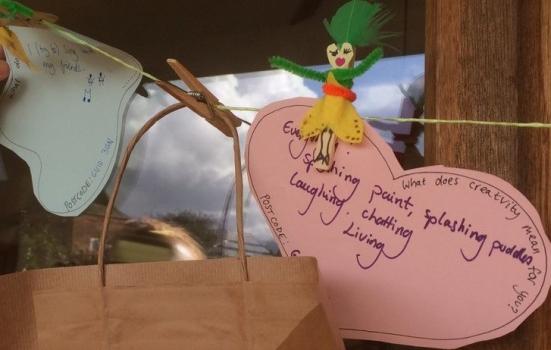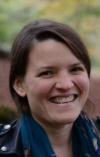As producer-in-residence of a whole town, Bridget Floyer explains how she treats the residents as neighbours rather than audiences or participants.

In February I invited colleagues and collaborators to the launch of my new company in a scout hut tucked away down an alley in Farnham, Surrey. I knew full well that most of them would not be able to make it (because it wasn’t in London where most of them are based), but it was crucial that it was held here in my own town.
There have been many lessons and reminders for me, including avoiding cultural snobbery
Why? I formed Larking Arts last summer for two reasons. First, in an attempt to have more capacity and sustainability in the professional theatre-producing work I do. And second, to embed this work firmly in the community where I live. The launch was also the final sharing for a pilot project called Our Neck of the Woods, run in partnership with Patrick Duggan at the University of Surrey and funded by The National Academics and Creatives Exchange. It was just the beginning of an ongoing research project into what it might mean to be an artist-in-residence (or in my case producer-in-residence) of a place, rather than a cultural institution or venue.
Place and communities
Place and communities have always been a theme of my work and I’ve produced community arts and audience development projects for Theatre Royal Plymouth, Emergency Exit Arts and Fuel among others. Sometimes, however, working in communities that I’m not a part of makes it too easy to distance myself. Am I there because I know better than them how to run their lives?
Yet it feels particularly important at the moment in work and life to be doing something that is capable of having a real and positive impact on the world, and reaching out beyond the bubble of self-referential algorithms on social media. Inspirations include writer and speaker John Paul Flintoff, who says that one of the best ways to achieve meaningful change is to get to know your neighbours, whether or not you agree with or even like each other.
Being creative together
Being in residence in Farnham doesn’t necessarily mean the work I produce will be for, by or about that community. It’s about treating people as neighbours rather than audiences or participants. Our Neck of the Woods is supposed to be mapping creativity, but really it’s an excuse to find ways to have conversations with individuals.
I find it relatively easy to talk to venues and other arts organisations, local artists, leaders of community groups and public services. But it felt harder to make contact with other people not in those worlds, especially when I was trying to have the same conversation that starts with mutual interest (“What do you do? This is what I do. What might we do together some day?”), rather than a different one (“I’m doing this. You ought to like it/come along/be educated about it”). Being creative together while asking questions seemed like a good way forward.
There have been many lessons and reminders for me, including avoiding cultural snobbery and understanding that different people prioritise different values. I’ve learnt so much from Farnham Fun Palace, for example, which is led by two generous, enthusiastic, modest and wise volunteers who had never managed an arts event before in their lives. They do things differently but for very good reasons.
Taking part
I also have to remind myself sometimes of the importance of just taking part. Having got all set up with a brilliant artist to run some kind of ingenious creative session, one of my favourite moments has been simply sitting down to play rummikub with the members of a seniors coffee morning. We brought our own rummikub set for the launch event and it was a brilliant icebreaker.
Working with Patrick Duggan and having the opportunity to question my own assumptions and whether my working processes bear out my theories, has also been beneficial, if necessarily challenging.
I hope this way of working will enable me to develop a producing team that can better support the work of some of the innovative artists I collaborate with. Some ideas have already started to leak through about more meaningful, longer-term, two-way relationships with audiences. I hope too that we will make exciting things happen locally with people here in Farnham and Aldershot, in various different ways, finding areas of mutual interest – just like I do with professionals.
Again, although it takes time, some of this is starting to happen. The voluntary theatre club I run, making more of a social occasion out of seeing contemporary theatre, has just been granted a small pot of funding by the local NHS commissioning group to be able to include those who have experienced social isolation.
Different voices
There are no easy answers and I’m definitely not getting everything right or even probably doing anything that hasn’t been done before. But I feel more convinced than ever that there is something here that needs more attention: the value of open, porous approaches that welcome and support different voices, without de-valuing what we have to offer ourselves as artists and people. Approaches that are possible for both big and small organisations. And somehow, just at a time when we might feel like retreating from the world, making sure we keep ourselves out there.
Bridget Floyer is Director of Larking Arts.
www.larkingarts.org.uk
Tw: @larkingarts




